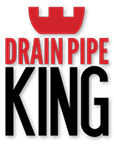How to remove concrete from pipes
There are many ways concrete and tile grout can get into pipes. Unfortunately, the most common situation is seen in newly built or renovated houses. Occasionally, when exposed concrete driveways are poured, they are hosed off and the excess concrete is washed down into the stormwater pits and eventually solidifies and causes blockages. If waste grates in showers are not taped up during renovations, grout can end up in the shower waste grate and this will cause sewerage blockages to occur.
When it comes to a newly constructed or refurbished house, it is expected everything will work as it should; there’s nothing worse than moving into a house and experiencing a sewerage or stormwater blockage.
We recently attended a property which was in the process of having a new pool installed. During the installation, there was a large rain storm which highlighted the fact that the stormwater pipes were not functioning properly. They were blocked up and began overflowing.
After an investigation with a CCTV drain camera, concrete was found to be the culprit. A high-pressure water jetter was used to remove the concrete slurry from the stormwater pipe. This situation was further complicated by the fact that a piece of machinery had run over a pipe and crushed it. Because the capacity of the pipe was reduced, a vac truck also had to be used to suck some of the debris out. Normally a jet rodder would do this sort of job on its own however, because the pipe was squashed, the debris had to be removed in the opposite direction using suction as opposed to pressure.
Concreters and tilers should dispose of excess concrete and grout appropriately. Placing it in the bin is always a better option than washing down the drain as this will inevitably cause the home owner dramas further down the track, if not immediately.

